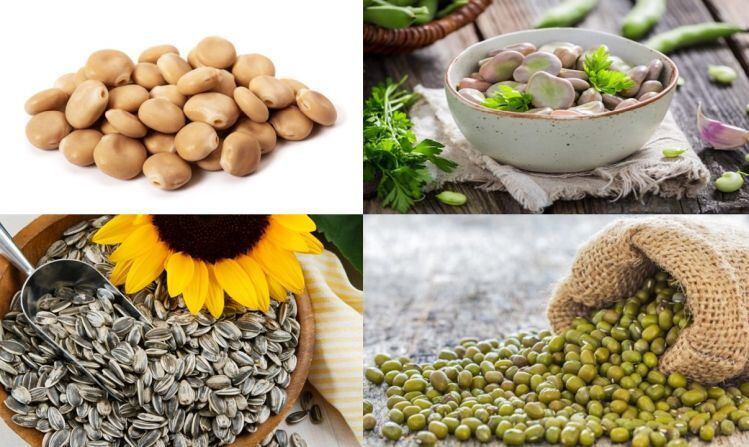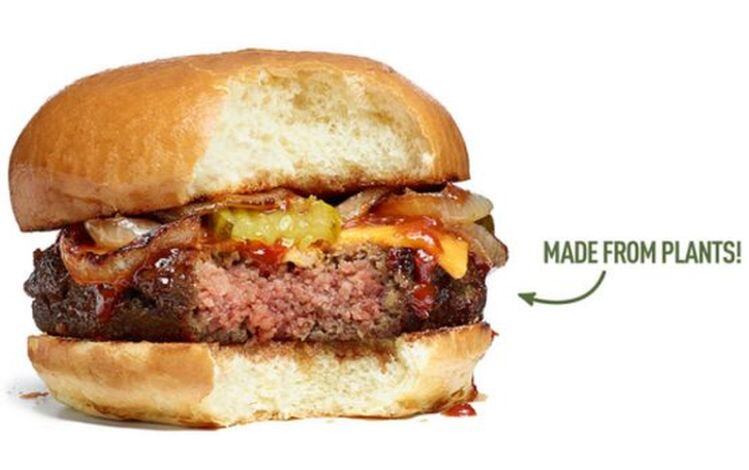FNU: Which plant-based proteins aside from soy, pea and wheat have the most potential for meat analogs and why?
KL: We’ve got a new plant in Enderlin, North Dakota, where we’re ramping up [capacity] and we’re releasing pea protein on a limited basis, but we’ve custom built it to allow for flexibility on inbound sources beyond peas.
We’re constantly evaluating protein sources. Lupin is intriguing, it has good gelling properties and a relatively clean taste, but the trade off is potentially that it’s an allergen [lupin is one of the 14 allergens that must be listed on food labels in the EU, although not in the US].
Sunflower protein has potential when it comes to scalability as there’s an established market for the oil, plus it has some functional characteristics that are attractive… and then we’re looking at a variety of beans, so we’ve seen companies out there working with fava beans or mung beans for example.
But all have a trade offs, so I think going forward a blend of proteins is going to be interesting so you can achieve certain protein quality standards [balance out the amino acid profile].
We’ve looked at chickpea powder… On a standalone basis the gelling characteristics can be challenging, but it’s a really nice inclusion in combination with other things for potential extrusion.
AF: We're also looking at emerging sources of proteins such as mycoprotein and we're doing some consumer research into how these are perceived.

FNU: Are protein blends - both from a nutritional and a functional perspective - the best options for plant-based meat products?
KL: It’s pretty clear that there’s no [single] protein that’s going to check all the boxes for every single consumer, but in combination you can satisfy consumer needs. You can also add in things like lentils and ancient grains and beans with more functional bases like soy and pea.
AF: From a consumer perspective, in the last three months in the US, 43% of consumers have consumed a milk alternative, 32% have consumed a meat alternative, and 30% a dairy alternative [eg. non-dairy cheese, yogurts etc] and there’s a need for a more health forward approach from consumers, who are looking for what we call ‘protein-plus,’ which you can achieve by blending ingredients.
So you can add grains, seeds, as well as different types of proteins to elevate the nutritional profile and meet the demand for more diverse [sources of ingredients] and this is opening up a new opportunity in the marketplace, so you don’t just have proteins, but also fibers, whole grains and so on.
FNU: What factors do you consider as you assess new protein sources?
KL: We have a world class research team that’s constantly screening inputs in the quest for the perfect protein, and we’ve catalogued them all based on function, cost, sustainability, availability, flavor and nutrition.
We’ll rely on this research coupled with consumer insights to guide us in our investment decisions as we look towards what’s the next best commercially viable protein.
FNU - Is extrusion the only game in town if you want to produce commercial quantities of plant-based meat?
KL: We’ve got extrusion experts in house using different methods to match the characteristics of different types of meats, but there are a lot of different ways to texturize proteins.
Our ventures group [ADM Ventures, which has invested in Geltor, which makes collagen via engineered microbes, and Sustainable Bioproducts, a startup growing a whole food fungal microorganism that has meaty qualities] is always keeping an eye on what’s next and there are products that have textural characteristics on their own and wouldn’t necessarily require extrusion.

FNU: When assessing the viability of new plant protein sources, is securing a ready market for the other components of the plant source (eg. oils, starch) key to determining which ones have commercial viability?
KL: Commercial viability of the byproduct is certainly a factor when evaluating viability for new proteins, particularly those you want to scale, but it’s not the only factor, and if the protein can command a sufficiently high price you don’t have to worry so much about the value add for oils, fibers and starches.
FNU: What is influencing ADM’s customers’ decision-making when it comes to protein choices?
AF: It all depends on the brand and company, so some are looking more closely at protein digestibility and quality, but flavor and texture are at the core, and taste is the #1 challenge when you’re working with plant-based proteins.
The other issue is the lack of variety that consumers see in the marketplace. They want more product formats and options beyond beef, so chicken, pork, will become more important going forward. I think protein blends are also a huge focus right now and most customers are starting to gravitate towards them.
I believe that the more plant forward that consumers are, some of the hesitancy around soy [in general] is fading, especially among younger consumers, because people are looking for nutrition [soy is a complete protein].


